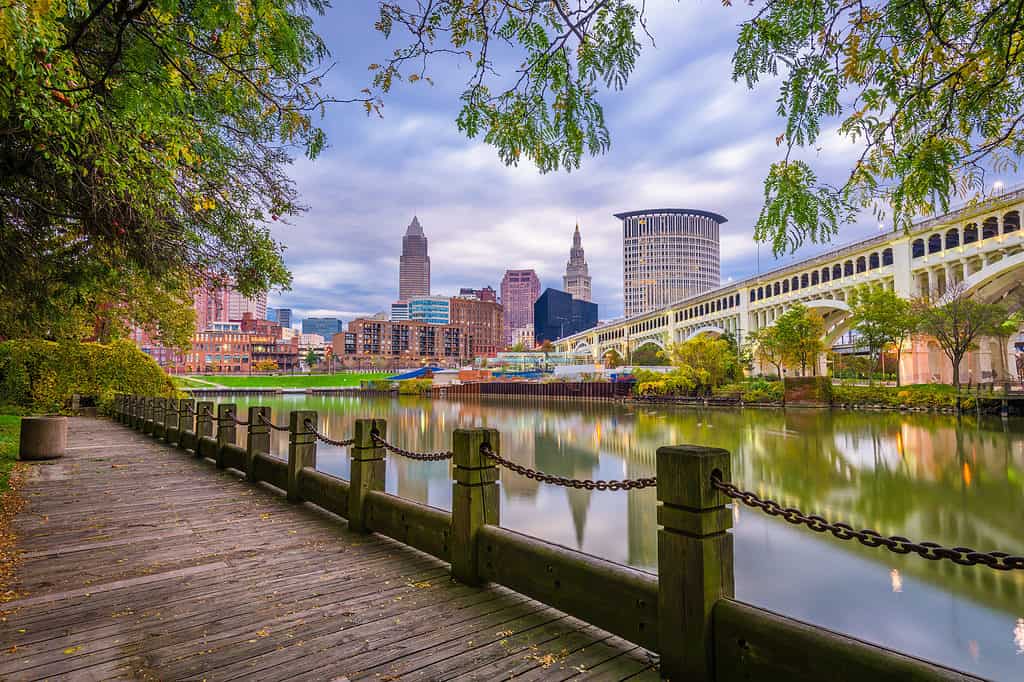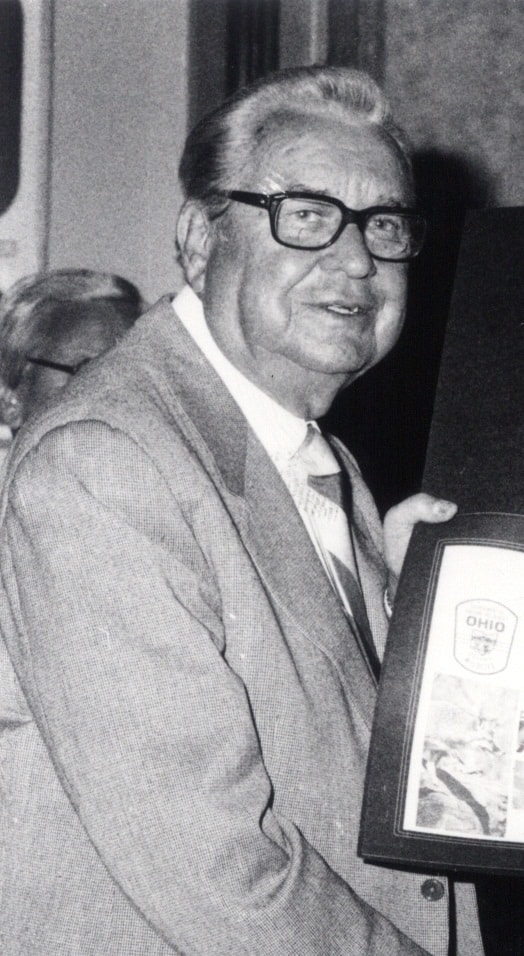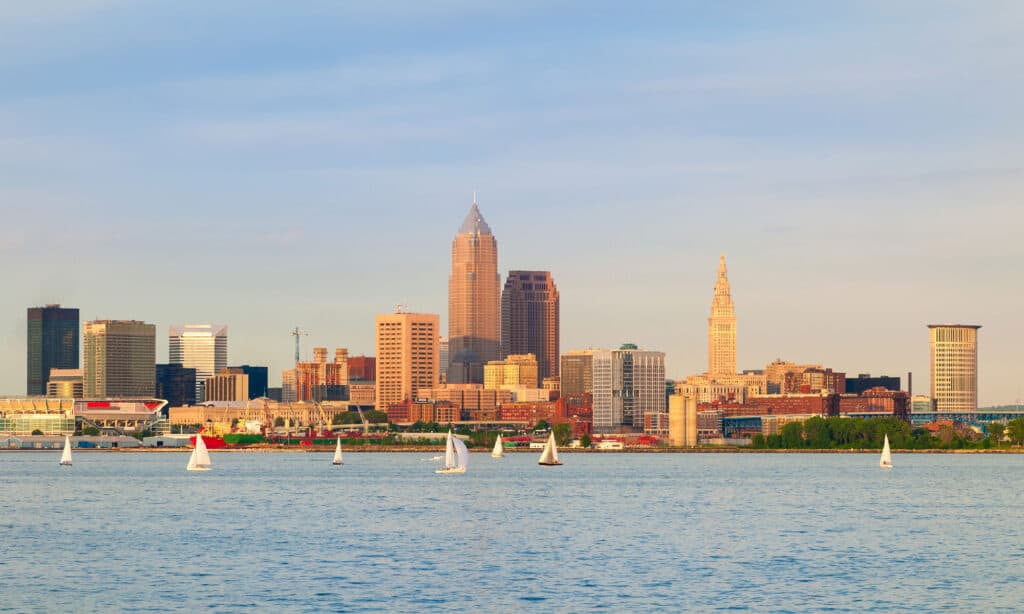Ohio is home to more than 11.7 million residents. Nearly 2.8 million Ohioans live in rural areas, giving Ohio the fourth-largest rural population among all U.S. states, trailing Texas, North Carolina, and Pennsylvania.
Even with a higher-than-average rural population, 76% of Ohioans live in urban areas. While that is significantly lower than California’s 94% urbanization, the highest in the country, it is far higher than Vermont, which has the nation’s lowest urbanization rate at only 35%. Ohio’s urbanization is slightly below the U.S. rate as a whole. The United States population reflects an 80% urbanization rate.
The urbanization rate in the U.S. did not exceed 50% until the early twentieth century. Up until then, the nation’s populace was mostly rural, and the economy was largely agrarian. Then came the Industrial Revolution, which changed how and where Americans lived. You can see those changes in the growth of Ohio’s cities and their surrounding metropolitan areas.
Ohio Cities by Population
While Ohio’s urban population is spread among dozens of cities, there are six that represent the largest urban centers in the state.
| City | City Proper Population | Metro Population |
|---|---|---|
| Columbus | 908,000 | 2.2 million |
| Cleveland | 361,600 | 2 million |
| Cincinnati | 309,500 | 2.25 million |
| Toledo | 266,300 | 646,600 |
| Akron | 188,500 | 702,000 |
| Dayton | 135,900 | 814,000 |
Columbus (Ohio’s capital city) is the only city among the six that is increasing in population within the city proper. The rest of the cities are declining, with Cleveland leading the way in the rate of population decrease.

Columbus is Ohio’s most populous city by a wide margin.
©Sean Pavone/Shutterstock.com
Cleveland’s population dropped sharply from 2020 to 2022. The city lost 3% of its total residents in just that two-year span. The city’s population has dropped by 9% from the 2010 census.

Cleveland’s population is declining fairly rapidly.
©iStock.com/Sean Pavone
One study suggests that Toledo is the fourth-fastest shrinking city in the United States. The study names Cleveland as the fifth.
However, while the population within city limits is declining in five of Ohio’s six biggest cities, the larger metro areas surrounding some of these cities are growing. As evidence of Ohio’s increasing urbanization, the state’s eleven fastest-growing counties are all located near the three largest cities of Columbus, Cleveland, and Cincinnati.
County Growth and Decline
Franklin County, where Columbus is located, is the largest and fastest-growing county in the state. The county is home to over 1.3 million people. Cuyahoga County, the home of Cleveland, has a population of 1.25 million. Franklin and Cuyahoga counties are the only Ohio counties with populations of over one million. However, the two counties are currently on different population trajectories.
Franklin County’s population grew an impressive 13.7% between the 2010 and 2020 censuses. Cuyahoga County’s population decreased by 1.2% over the same span, and the population is decreasing at an even more rapid rate now.
Hamilton County is the home of Cincinnati, the third-largest city in the state. The county’s population grew by 3.5% from the 2010 to the 2020 census. The county has since seen a modest decline of 0.7% from 2020 to 2022.
Total Population in the State
Ohio’s total population dropped 0.4% from 2020 to 2022. A more severe decline of 5.7% in the state’s population is projected by 2050 if current fertility, mortality, and migration rates remain unchanged. Ohio is currently the seventh most populous state in the United States but will likely be overtaken by Georgia (currently ranked eighth in population) if current trends continue.
The overall population in the United States grew by 7.35% between the 2010 and 2020 censuses. The nation has seen 0.6% growth from 2020 to 2022.
Ohio Cities by Land Area
| City | Size (square miles) |
|---|---|
| Columbus | 226 |
| Toledo | 84 |
| Cleveland | 82 |
| Cincinnati | 80 |
| Akron | 62 |
| Dayton | 57 |
Columbus’ footprint is nearly the size of the next three largest cities combined. While there are multiple contributing factors to the city’s disproportionate size compared to Ohio’s other cities, the primary reason traces back to a Columbus mayor in the mid-twentieth century.
Before Jim Rhodes served two terms as Ohio’s governor, he was the mayor of Columbus from 1944-1952. While in his mayoral role, Rhodes vastly expanded the footprint of Columbus using what came to be known as “water gun diplomacy.”

Jim Rhodes, seen here in 1981, is largely responsible for the expansion of Columbus’ land area.
©Fremont News Messenger / Public domain – Original / License
As the communities around Columbus grew, they needed access to water. Columbus had sole control of the municipal water supply. Rhodes told these communities that, if they wanted water access, they had to submit to annexation by Columbus. This is the main reason why Columbus’ land area is disproportionately large compared to Ohio’s other major cities. It is also one reason why Columbus’ population is drastically higher than Ohio’s other major cities. The city’s bigger land area allows room for far more residents.
Rhodes was able to annex these communities, in part, because of Columbus’ central location in the state. There was little standing in his way. By contrast, Cleveland is landlocked by Lake Erie to the north, while Cincinnati is hemmed in by the Ohio River (which is also the state’s boundary line with Kentucky) to the south. Even if these cities did try to expand their land area, their options are more limited due to these boundaries.

Cleveland’s expansion potential is limited due to its location on Lake Erie.
©iStock.com/PapaBear
Ohio Cities by Economic Impact
The gross domestic product (GDP) is the typical metric used to measure a city’s economic impact. GDP is the total monetary or market value of all the finished goods and services produced within a city each year. The figures below were collected from Federal Reserve Economic Data provided by the Federal Reserve Bank of St. Louis.
| City Metro | Annual GDP (billions of dollars) |
|---|---|
| Cincinnati | 171.8 |
| Columbus | 127.8 |
| Cleveland | 122.3 |
| Dayton | 41.1 |
| Akron | 41 |
| Toledo | 40.5 |
Ohio’s six largest cities and their surrounding metro areas are responsible for generating 66% of Ohio’s total GDP. Ohio has the seventh-highest GDP among all U.S. states.

Greater Cincinnati has the highest GDP of any location in Ohio.
Ohio’s Largest Employers
As we consider Ohio’s economy, here is a look at the top ten largest employers in the state, per figures provided by the Ohio Department of Development. Seven of the top ten are headquartered in or near Ohio’s largest cities. (Shaker Heights is a suburb of Cleveland.)
| Company | Number of Ohio Employees | Headquarters Location | Sector |
|---|---|---|---|
| Cleveland Clinic Foundation | 56,986 | Cleveland, OH | Health |
| Wal-Mart Stores, Inc. | 55,262 | Bentonville, AR | Retail: General Merchandise |
| Amazon.com, Inc. | 45,000 | Seattle, WA | Retail: General Merchandise |
| Kroger Co. | 44,077 | Cincinnati, OH | Retail: Food Stores |
| Ohio State University and Medical Center | 35,656 | Columbus, OH | Education and Health |
| Wright-Patterson Air Force Base | 33,807 (includes civilian private contractors and military personnel on base) | Dayton, OH | Government Air Force Base |
| University Hospitals Health System, Inc. | 30,891 | Shaker Heights, OH | Health |
| Bon Secours Mercy Health | 30,510 | Cincinnati, OH | Health |
| OhioHealth | 30,488 | Columbus, OH | Health |
| JPMorgan Chase & Co | 20,228 | New York, NY | Finance: Bank |
Other Ohio Employment Notes
Healthcare is a major economic driver in Ohio, with healthcare and hospital groups occupying five of the top ten spots on the list of the state’s largest employers. (The figure for Ohio State University and Medical Center combines employment from both the university and the hospital.)
Wright-Patterson Air Force Base in Dayton is the largest employer at a single site in the state.
Three industry sectors represent 66 of Ohio’s top 100 employers: retail (28), health (19), and manufacturing (19).
Americans are well-acquainted with several companies which are headquartered in Ohio. A few notables include Kroger, Proctor & Gamble, Victoria’s Secret, Bath & Body Works, Smucker’s, Sherwin-Williams, Goodyear Tire & Rubber Company, Marathon Petroleum, Nationwide Mutual Insurance Company, Abercrombie & Fitch, and Big Lots.
The photo featured at the top of this post is © iStock.com/gguy44
Thank you for reading! Have some feedback for us? Contact the AZ Animals editorial team.









